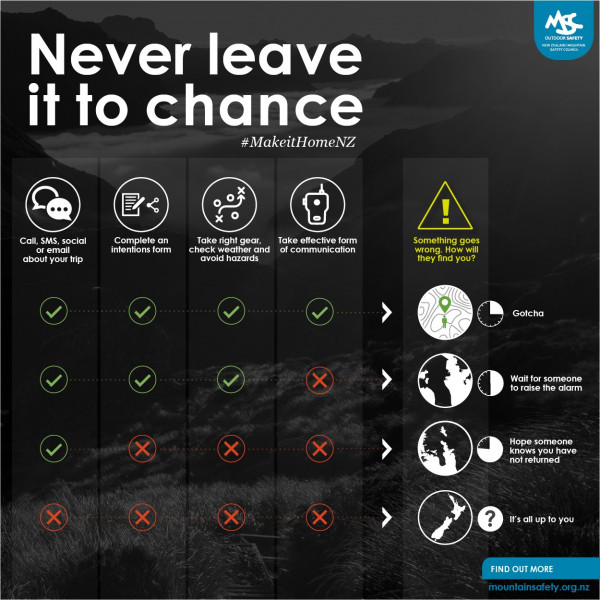No Service in the Outdoors
For example: the weather closes in unexpectedly making progress to your hut far slower than expected, meaning you might be in an ‘unexpected night out’ scenario. If you don’t have an emergency shelter or tent you could be in big trouble!
Similarly, if you’re out for a day-walk and on the way back the footbridge you used to cross the river is now damaged, you’ve got a choice to cross a dangerously swollen river or stay on the bank for safety (almost always the right call). In both of these scenarios — which are more common than you might think — you’ll need to call for help. If you’re relying on your smartphone you’d better hope there’s service! Unfortunately, the vast majority of outdoor regions in New Zealand have no service and those that do it’s often patchy and unreliable.
It’s not a good idea to rely on cell phone service in an emergency situation. To compound the situation it’s common to use your smartphone as a camera which can dramatically reduce the battery power available. If your phone barely makes it through a normal day in an urban environment you can expect it to be worse in the outdoors, particularly if you leave it on when it’s in your pack.
So, what options do you have that give some security in the event you and your group are caught out? Below are a list of devices that we’d urge you to consider for your next trip (and every trip beyond that).
Devices
1. PLB (Personal Locator Beacon) A PLB is a small, emergency distress beacons that emit a UHF radio signal when activated. Search and Rescue operations use the signal to ‘find’ the beacons, as detailed below. Once activated, the signal is picked up by satellite and/or aircraft. An alert message is relayed to the nearest Local User Terminal (LUT, ground station), which calculates the beacon’s position and sends the data to the Mission Control Centre (MCC). The MCC then sends the information to the RCCNZ, which in turn initiates a class II rescue operation. The beacons operate with a clear view of the sky; avoid gorges or heavy foliage. Do not turn off once activated. Stay put. Only use in an emergency and make sure you follow the guidelines on registration. PLB’s are available to hire from a range of outlets.
2. Satellite messenger devices (SPOT, InReach) Satellite messenger devices use the earth’s orbiting satellite systems to send messages or emergency distress notifications. Various devices offer differing services, which can include: distress/emergency signals; pre-programmed text/email messages; free form text/email messages; and route tracking using GPS capabilities. Some devices allow you to use your mobile phone to send texts/calls using the satellite technology. Each device is different, so it is important that you research their specific functions and select one that meets your needs:
3. Satellite Phones: Satellite phones are similar to mobile phones but use orbiting satellites (as opposed to mobile phone coverage towers) to connect to phone networks. A satellite phone can be used anywhere in the world to connect to domestic and international numbers, provided you have satellite coverage. Coverage will vary depending on your location. For example, being on top of a mountain with a clear view of the sky will give you better coverage and call quality when compared to calling from the bottom of a valley.
4. Mountain Radio: The New Zealand Mountain Radio Service is a volunteer group that provides a backcountry communications service with scheduled calls. Here you can hear the weather forecasts or request emergency assistance. You can rent these devices.
Watch the video below as we unpack the benefits of different devices
